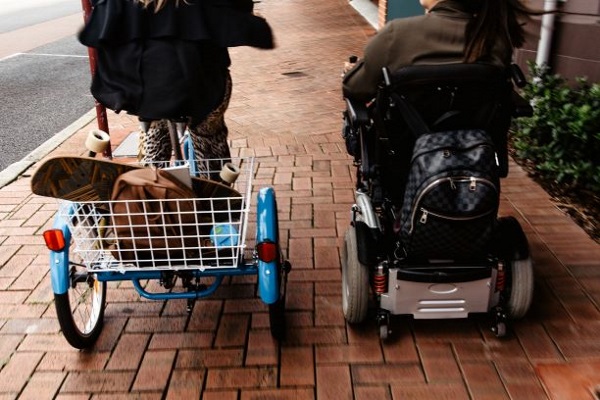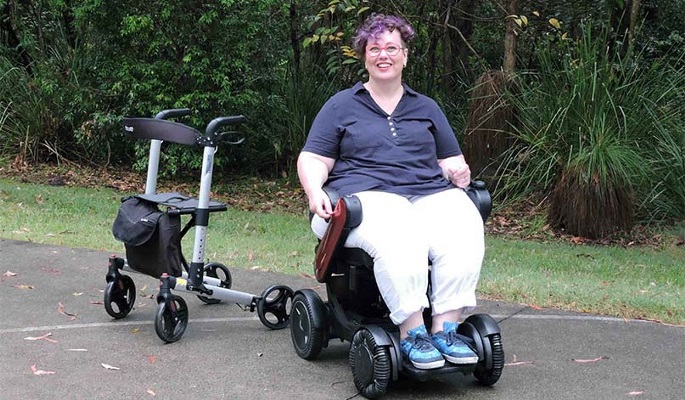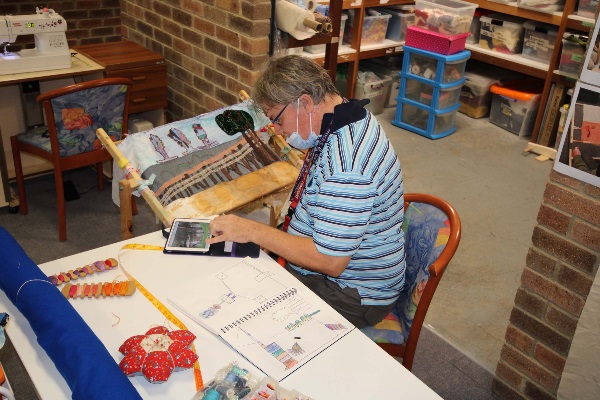Ready or not...
A personal 'be prepared’ story by Pat Smith
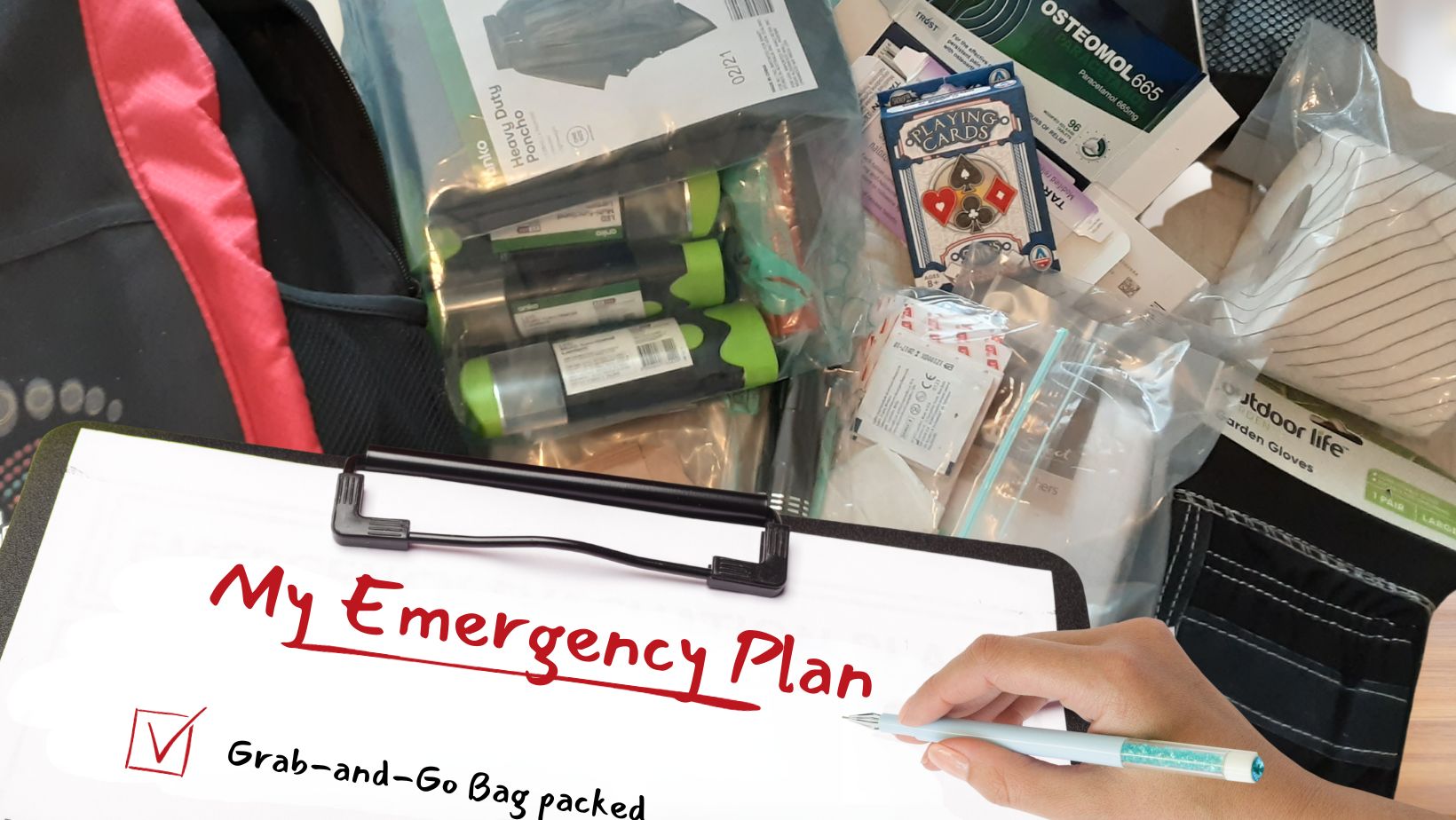
AT Chat’s assistive technology (AT) community has come together again to support each other as the news of fires, floods and other emergencies due to Australia’s first El Niño event in about eight years hit the airwaves. With questions like, "Do I know what the risks and threats are near me?", and "Do I have a plan in place to address them?" being at the forefront of thoughts for many of our peers. Our AT Chatter Pat shares her planning journey below.
A few years ago, some people in the group shared their plans and 'grab-and-go bag solutions. I found the topic distressing but motivating to do something to help me feel less vulnerable. It has been a slow process; I still don't have answers for some things but at least I now have a plan.
Each of us has different needs, so what works for me probably won't fully work for you, but in saying that there is a real lack of disability-friendly advice out there.
I'm semi bedbound. I struggle to sit or stand for long and am an 'assisted walker'. This combined with the last major fires lasting 2-3 months near me causing major losses to homes and businesses, coupled with a lack of official evacuation centres made advice like 'leave early' feel ridiculous. There was literally nowhere for me to leave early too.
The entire area was on high alert, and the best I could do was reassure myself that while I could see the plumes of smoke, we were not in immediate danger. That of course didn't help when I couldn’t leave, and we were inundated with smoke and burnt leaves.
I couldn't leave for the entire 3 months, and none of my friends or family were much safer. I was lost and didn't know what to do. Even if I got to an evacuation centre - could I manage my disability needs there?
I started planning...
- I have found out where the evacuation centres are likely to be. In my area, they are mostly the same for floods and fires. Most local to me are accessible. I have requested that the council include accessibility information when advertising these - I've not seen them do this yet though.
- I used 'consumables funding' to purchase some equipment that could do double duty as a day trip or travel equipment and be helpful in an emergency. This includes an extra high sun lounge so I can lay flat but still get up, and over the toilet seat raiser. I could take these with me to the library (where it is recommended, that we go when there are no evacuation centres running), or a friend's home.
- I haven't yet this season, but will shortly organise a person to come and clean my gutters and do some general property management. I need to check I have enough buckets to have some water at each corner of the property for spot fires if needed. Support workers or kids can fill these if there are any concerns (last time we just kept topping them up for the entire summer).
- I have a 'grab-and-go bag'. Mostly the bag consists of a list of things to pack and grab. I got mine through the Hawkesbury City Council.
- Getting to an evacuation centre continues to be an issue. A couple of the neighbours may have spare seats for kids and me if a partner is too far away (they work 1.5 - 2 hrs away) to get back to us in time and support workers are unable to help. Not ideal, but it's a plan.
"I just realised my list doesn't have walking aids or dressing aides! - the great thing about writing this was working out what I still needed to do, and it helped me to feel like I did have a plan".
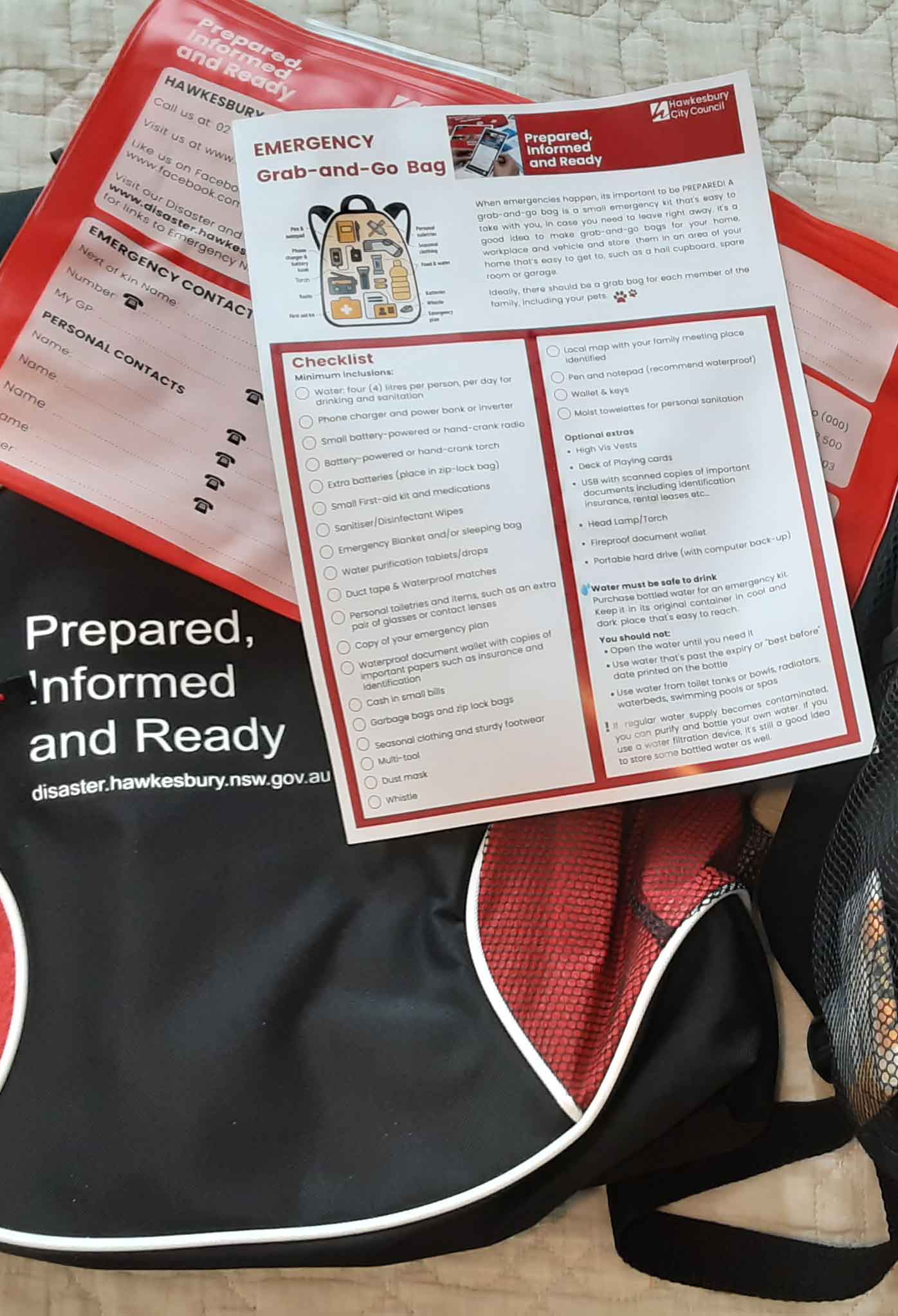
My 'Grab-and-Go Bag' includes...
- Mostly the bag consists of a list of things to pack and grab.
- Medications and some medication packets even if I don't have spare medication to put in it (so I can prove what I've been prescribed) and I'm going to ask my GP for a letter.
- Toilet paper
- Gloves - gardening gloves in case the driver needs to move fallen branches or like.
- Rain ponchos (this bag is for floods as well as fire)
- Torches
- Pack of cards - I have 3 children/teens to keep busy
- Masks - infection control as well as useful in fires for smoke
- Small cloths/washers for washing and cooling as needed
- Microfibre towel
- Mini first aid kit (alcohol wipes, band-aids etc.
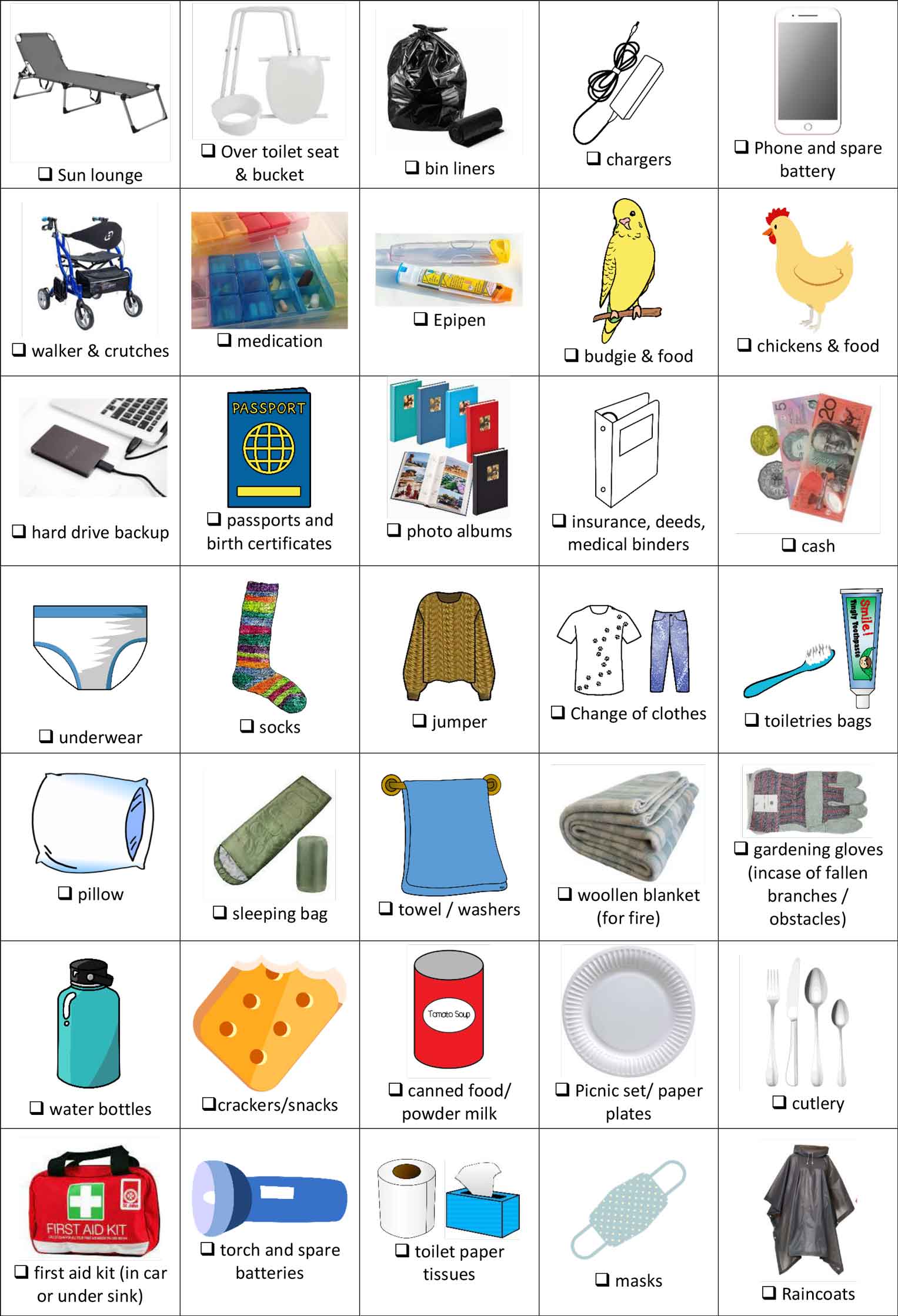
My list to pack includes...
- Important documents
- Sunbeds and over toilet seat (plus bags to turn it onto a commode if needed)
- Clothes
- Food - water and any tins/easy packets of food we have (while most evacuation centres have plenty, I figured it wouldn't hurt to have some in the car if needed)
- Phone and chargers plus spare batteries
- Wipes
- Toiletries bags
- Pillows and sleeping bags.
- Woollen blankets - we have a few inherited ones that I keep for this purpose - in case of being caught in a fire in the car or home.
I would love to see what others have been doing in this space. I still feel like we are an afterthought. It took 3 days for the council to reply to questions about whether a particular evacuation centre was accessible. This should all be prepared in advance and shouldn't be an afterthought.
Pat asked that her peers share any ideas or questions they might have. Acknowledging that even if it isn't the same for someone else, it might give them ideas as to what might work in their situation.
We can’t thank the AT Chatterbox community enough for sharing their lived experience of planning for an emergency. If you would like to read their previous article, ‘Emergency Planning – Don’t forget the AT’ please follow this link. It’s full of great tips and links to help connect you to resources to support your emergency planning.
If you use AT and would like to join the AT Chatterbox community please follow this link.
Below are some more helpful tips from your peers to help you plan and manage an emergency or evacuation.
LYNNE:
Wheelie bins filled with water and cotton (if you can get them now) mops were the other great standby.
The old tennis balls in the downpipes were a good standby too to fill the gutters with water - providing you didn't have rectangular downpipes - found out the hard way lol.
Always bring at least one hose inside the house to keep safe - for use after the fire has passed.
also make sure your car is facing the way you need to flee - no reversing, then driving off. Having to reverse first wastes precious seconds.
Have cash if possible, as well as power will possibly be off.
SUE:
And another tip .. don’t think it was mentioned … make sure you keep your car topped up with petrol. If you need to escape the area, you need fuel.
ELIZABETH:
In WA I was told by my maxi taxi driver that they are on standby to help evacuate people with disabilities who don’t drive like me.
EM:
There are many workbooks out there to help you think about what YOU need to start thinking about.
Many councils have " dashboards" where you can see local information at a glance. Might be called, emergency dashboard, disaster dashboard etc. You can often find "opt-in notification" options.
ABC radio will broadcast alerts as will some of your local community radio stations.
-(1).jpg?sfvrsn=cc2385be_1) Learn more from your peers about planning for an emergency - watch our webinar here!
Learn more from your peers about planning for an emergency - watch our webinar here!
Hosted by AT Chat and presented by Clare Gibellini and Andrew Fairbairn, this webinar, 'You and your AT in an emergency' presents information and practical advice to support people with disability to be prepared for an emergency.

